Baby Bottles
When it comes to selecting the right baby bottle for your little one, the choices may seem overwhelming. From traditional options to innovative designs, each type of bottle offers unique features catering to different needs. Before making your decision, consider factors like material, design, and functionality to ensure a seamless feeding experience for your baby. Understanding the benefits of various baby bottles can help you make an informed choice that aligns with your parenting style and your baby's preferences.
Types of Baby Bottles
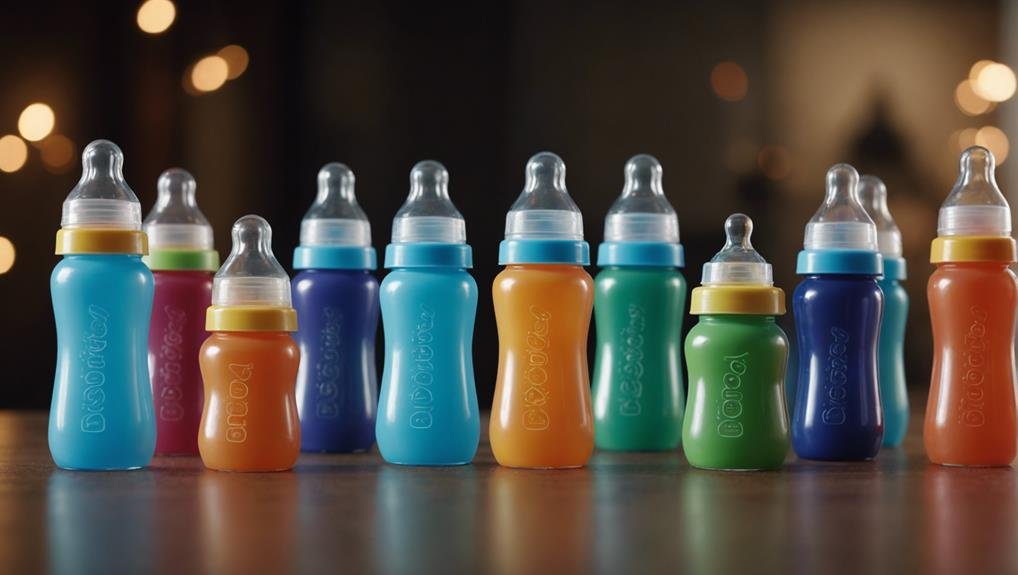
When choosing baby bottles, it's important to consider the different types available to meet your baby's feeding needs. One key aspect to evaluate is the bottle material comparison.
Traditional plastic bottles have been a go-to choice for many parents due to their lightweight and durable nature. However, new bottle trends have introduced safer options like BPA-free plastic and stainless steel, which are excellent choices for parents looking to avoid chemicals leaching into their baby's milk.
When it comes to glass bottles, they're making a comeback in the baby bottle market. Glass bottles are a great option for parents concerned about potential chemical exposure from plastic. They're also easier to clean and maintain over time, making them a hygienic choice for your little one.
While glass bottles may be slightly heavier than their plastic counterparts, the peace of mind they provide can outweigh this factor for many parents. Make sure to explore different bottle materials to find the best fit for your baby's feeding routine.
Benefits of Glass Bottles
Glass bottles offer numerous advantages for parents seeking a safe and eco-friendly option for their baby's feeding needs. When it comes to glass bottle durability, you can rest assured that these bottles are sturdy and long-lasting, making them a reliable investment for your little one's feeding journey.
Unlike plastic bottles, glass bottles are less likely to scratch or deteriorate over time, ensuring that they remain in pristine condition for repeated use.
Moreover, the environmental impact of glass bottles is significant. Glass is a highly recyclable material, making it a sustainable choice for eco-conscious parents looking to reduce their carbon footprint.
Benefits of Plastic Bottles
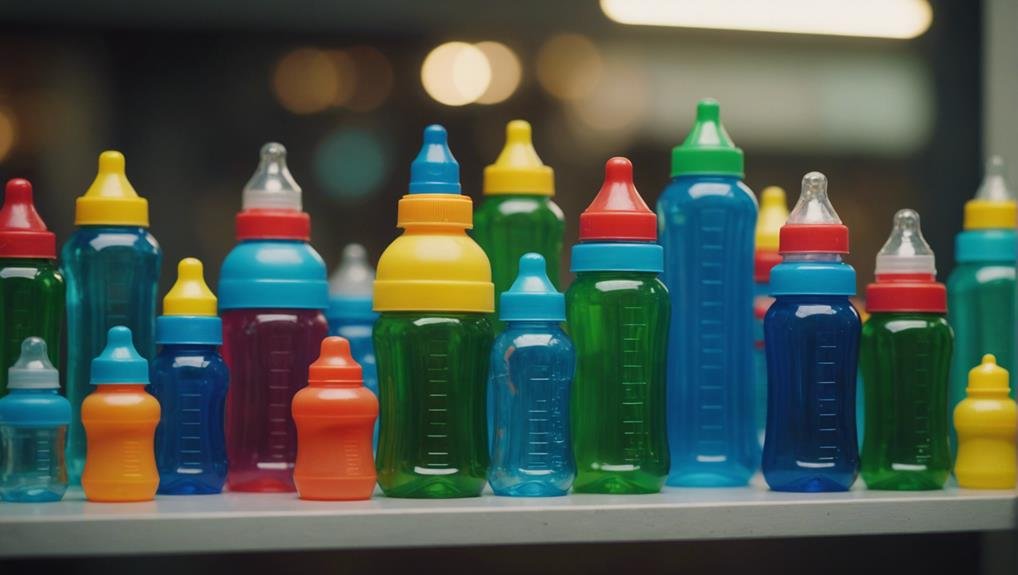
For parents seeking a lightweight and affordable option for their baby's feeding needs, plastic bottles offer a convenient and practical solution. Plastic bottles aren't only cost-effective but also lightweight, making them easy to carry around and ideal for on-the-go feeding.
The durability of plastic bottles ensures that they can withstand accidental drops and daily wear and tear, providing a long-lasting feeding option for your little one.
When considering the environmental impact of plastic bottles, it's essential to choose BPA-free and phthalate-free options to minimize potential harm. Recycling plastic bottles after use can also contribute to reducing waste and lessening the environmental footprint.
Despite some concerns about plastic bottles, advancements in materials and manufacturing processes have led to safer and more eco-friendly options on the market.
Benefits of Silicone Bottles
Silicone bottles offer a safe and versatile alternative for parents looking for a durable and easy-to-clean option for their baby's feeding routine. The easy cleaning aspect of silicone bottles is a real game-changer for busy parents. The durable material ensures longevity, making them a reliable choice for everyday use.
One standout feature of silicone bottles is their heat resistance, allowing you to safely warm milk without worrying about damaging the bottle. This is especially convenient during those late-night feedings when you need things to be as hassle-free as possible.
Additionally, the ergonomic design of silicone bottles makes them comfortable to hold, providing a pleasant feeding experience for both you and your little one.
Incorporating silicone bottles into your feeding routine can simplify your life while ensuring your baby's safety and comfort. With their easy cleaning, durable material, heat resistance, and ergonomic design, silicone bottles are a practical choice for modern parents seeking convenience without compromising on quality.
Anti-Colic Features
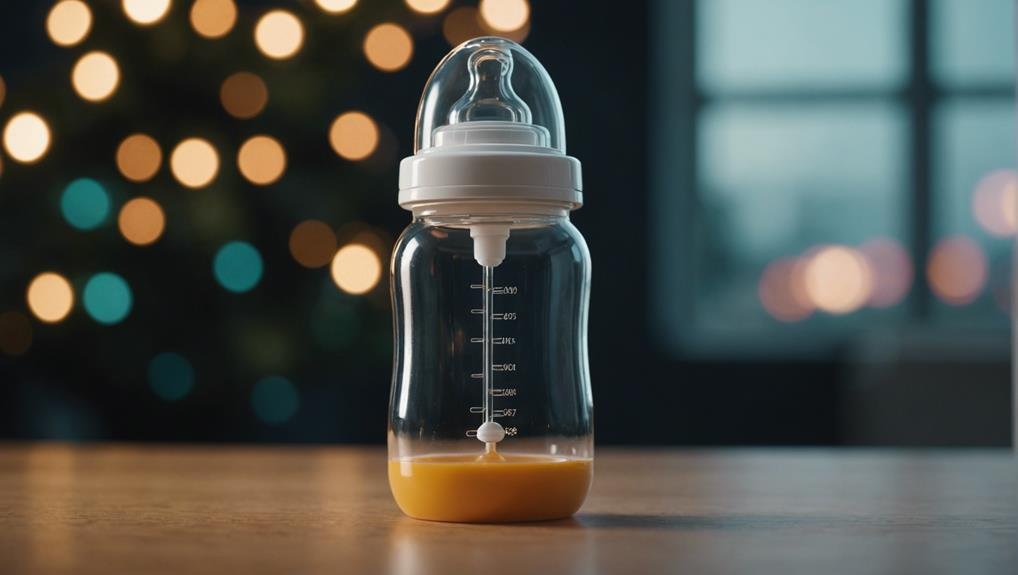
When seeking baby bottles, consider those with anti-colic features to help alleviate discomfort during feeding. The materials of the bottle can play a significant role in colic prevention. Opt for bottles made of silicone or other high-quality, BPA-free materials to ensure your baby isn't exposed to harmful substances that can exacerbate colic symptoms.
Additionally, pay attention to the nipple shapes of the bottles. Look for nipples designed to mimic the natural shape and feel of a mother's breast to facilitate a more comfortable feeding experience for your little one.
Feeding techniques also play a crucial role in preventing colic. When using anti-colic baby bottles, ensure that you're holding your baby in an upright position during feeding to minimize the intake of air, which can lead to colic. Burp your baby frequently throughout the feeding to release any trapped air bubbles and reduce the likelihood of colic symptoms.
Nipple Options
Consider exploring various nipple options when selecting baby bottles to ensure a comfortable feeding experience for your little one. Nipple sizes play a crucial role in accommodating your baby's needs as they grow.
Newborns often prefer smaller nipple sizes for easier feeding, while older babies might benefit from larger sizes to control the milk flow. It's essential to observe your baby's feeding habits and adjust the nipple size accordingly.
Material preferences also play a significant role in choosing the right nipple for your baby's bottle. Silicone nipples are a popular choice due to their durability and flexibility. They tend to be firmer and hold their shape well over time.
Latex nipples, on the other hand, are softer and more natural for babies to latch onto, but they wear out faster than silicone nipples. Consider your baby's comfort and any potential allergies when selecting the material for their bottle nipples.
Proper Bottle Cleaning
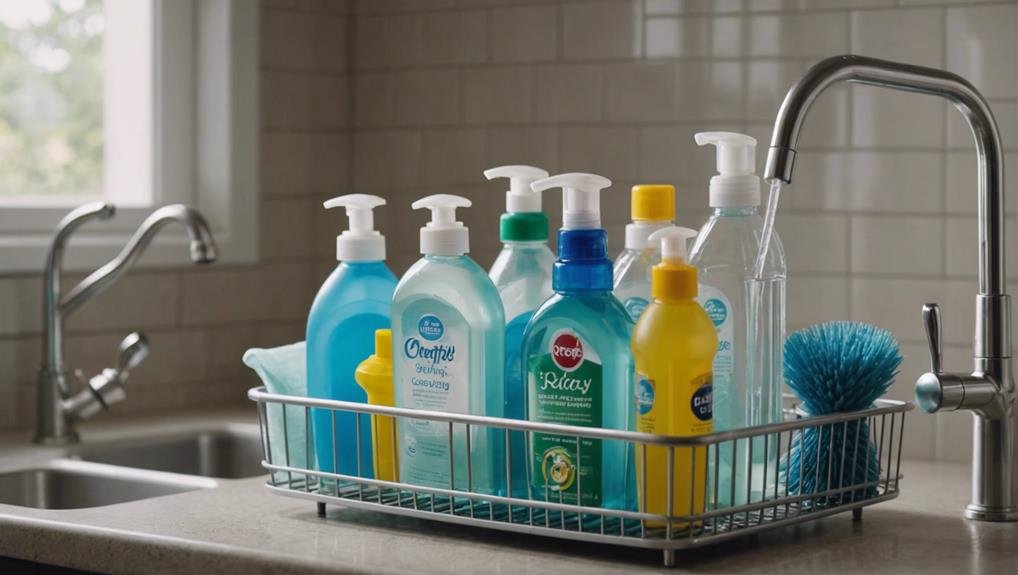
Ensuring proper hygiene practices is crucial for maintaining your baby's bottle cleanliness and safety. After each use, it's essential to thoroughly clean your baby's bottles to prevent bacteria buildup. Start by disassembling the bottle, removing the nipple, ring, and any other parts.
Use hot, soapy water and a bottle brush to scrub the bottle inside and out, paying extra attention to any milk residue. Rinse each part thoroughly to ensure no soap residue remains.
Once cleaned, allow the bottle parts to air dry completely on a clean drying rack. Avoid using towels or cloths to dry them, as these can introduce bacteria. Ensure the bottles are completely dry before storing them to prevent mold growth.
Store the bottles in a clean, dry area away from dust and dirt. Consider using a designated container or shelf specifically for baby bottles to keep them organized and free from contaminants. By following proper cleaning, drying, and storage practices, you can help ensure your baby's bottles are safe for use.
Sterilization Methods
To maintain optimal cleanliness and safety for your baby's bottles, it's essential to utilize effective sterilization methods. Two common methods for sterilizing baby bottles are steam sterilization and the boiling method.
Steam sterilization involves using a specialized electric steam sterilizer that uses high-temperature steam to kill germs and bacteria effectively. This method is convenient and ensures thorough sterilization without the need for harsh chemicals.
Alternatively, the boiling method is a cost-effective way to sterilize baby bottles. Simply place the disassembled bottles in a pot of boiling water for a few minutes to kill any harmful bacteria. Remember to let the bottles cool before use to prevent burns or damage.
UV sterilization and the microwave method are other options available. UV sterilizers use ultraviolet light to eliminate bacteria, viruses, and germs. On the other hand, microwave sterilization involves a microwave-safe sterilization bag or container to quickly and effectively sterilize baby bottles.
Choose a sterilization method that fits your lifestyle and ensures your baby's bottles are clean and safe for use.
Bottle Warmers
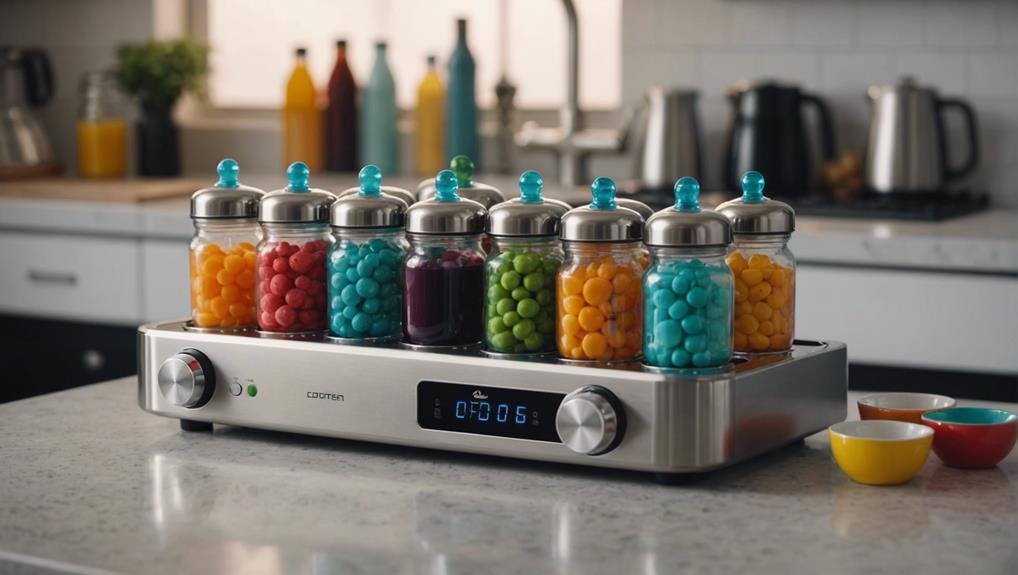
When it comes to ensuring your baby's bottles are at the right temperature for feeding, exploring the use of bottle warmers can provide a convenient solution. Bottle warmers offer a safe and efficient way to warm your baby's milk or formula to the perfect temperature without the risk of overheating.
One key benefit of using bottle warmers is that they help maintain the nutrients in breast milk or formula by gently warming the liquid without exposing it to high temperatures that could destroy essential components. This is particularly important when considering your baby's health and development.
In addition to preserving nutrients, bottle warmers also contribute to bottle safety. By using a dedicated bottle warmer, you can avoid the potential dangers associated with heating bottles in the microwave or on the stove, such as uneven heating or hot spots that could burn your baby's mouth.
To ensure the utmost bottle safety, it's essential to follow the manufacturer's guidelines for your specific bottle warmer model and regularly clean and sterilize the unit according to the instructions.
Bottle warmers offer a convenient and reliable way to provide your baby with the perfect temperature milk or formula while prioritizing bottle safety and hygiene.
Travel-Friendly Options
For parents on the go, having travel-friendly options for warming your baby's bottles can make feeding time easier and more convenient. When it comes to traveling with your little one, efficiency is key. Consider investing in bottle organization products that can keep your bottles neatly stored and easily accessible.
Look for compact bottle accessories like insulated bottle bags or portable bottle warmers that can heat your baby's milk or formula quickly and safely while you're out and about.
Having a designated space for your baby's bottles in your travel bag can help you stay organized and avoid the hassle of rummaging through your belongings when it's time for a feeding. Additionally, bottle accessories such as spill-proof lids or silicone bottle sleeves can provide added convenience and peace of mind during your travels.
Remember to pack extra bottle nipples and cleaning supplies to ensure you're always prepared no matter where your adventures take you. With the right travel-friendly options, feeding your baby on the go can be a stress-free experience for both you and your little one.
Frequently Asked Questions
Can Baby Bottles Be Used for Both Formula and Breastmilk?
Yes, baby bottles can be used for both formula and breastmilk. While breastfeeding offers various benefits, bottle feeding may have drawbacks. It's important to follow proper formula preparation guidelines and store breastmilk correctly to ensure your baby's health.
Are There Any Eco-Friendly Baby Bottle Options Available?
Looking for eco-friendly baby bottle options? Have you considered sustainable materials and designs, biodegradable choices, or reusable bottles? There are many innovative options available that prioritize both your baby's health and the environment.
How Can I Prevent Nipple Confusion When Using Bottles?
To avoid nipple confusion when transitioning between breast and bottle, follow your baby's nipple preference. Watch for feeding cues and use soothing techniques during bottle feeding. Stay attuned to your baby's needs for a smooth transition.
What Is the Best Way to Store Unused Baby Bottles?
When storing unused baby bottles, remember to uphold cleanliness standards for proper storage. Control temperature to extend shelf life. By following these steps, you'll ensure that your baby's feeding equipment stays safe and hygienic.
Are There Any Baby Bottle Brands Specifically for Babies With Reflux?
When dealing with reflux, specialized bottles can offer solutions. Look for brands designed to minimize air intake and ease digestion. Pair these with feeding techniques that emphasize upright positioning to help alleviate discomfort during meals.
Conclusion
In conclusion, when it comes to choosing the right baby bottle for your little one, remember the saying 'safety first.'
Whether you prefer the durability of glass, the convenience of plastic, or the versatility of silicone, proper cleaning and sterilization are essential for a safe feeding experience.
With anti-colic features and travel-friendly options available, you can ensure your baby stays healthy and happy during feeding time.
Choose wisely and enjoy the bonding moments with your precious one.

